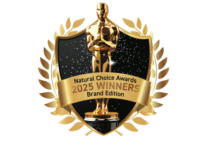
WholeFoods Magazine
Exporting your dietary supplement, herb or ingredient?

The issue of genetically modified organisms (GMOs) in the food supply is receiving more media attention over the last two years as voluntary and mandatory labeling programs have proliferated throughout the world.
In the United States, several states have proposed initiatives that would require foods containing genetically engineered ingredients to be labeled. Labeling provisions will go into effect in Maine and Connecticut if neighboring states adopt similar legislation. In addition to government regulations being introduced, voluntary food labeling programs have exhibited significant growth. More than 15,000 products display the Non-GMO Project seal and total retail sales of verified non-GMO products now exceeds $5 billion. Other seals, including self-declared, company-specific non-GMO claims, are on the rise, too.
 While labeling of foods containing GMO ingredients is a relatively new phenomenon in the U.S., several international markets have had such rules in place for close to two decades. The requirements, however, are not standardized and differ depending on the country, region and intended use of the product. The European Union requires labeling of food products if the level of GMO is greater than 0.9%. Japan has a regulatory tolerance threshold of 5%. Industry manufacturers exporting to this market often hold themselves to a more stringent level of 1% or less. Making sense of these nuances in policy versus practice can be challenging. But these additional considerations are important to optimize market access and facilitate international trade of your product.
While labeling of foods containing GMO ingredients is a relatively new phenomenon in the U.S., several international markets have had such rules in place for close to two decades. The requirements, however, are not standardized and differ depending on the country, region and intended use of the product. The European Union requires labeling of food products if the level of GMO is greater than 0.9%. Japan has a regulatory tolerance threshold of 5%. Industry manufacturers exporting to this market often hold themselves to a more stringent level of 1% or less. Making sense of these nuances in policy versus practice can be challenging. But these additional considerations are important to optimize market access and facilitate international trade of your product.
Some European countries have voluntary regional and/or industry-specific labeling programs with more stringent requirements than the EU regulations. The stated aim is to provide consumers additional choice in purchasing foods made without genetic engineering. For example, while European Union labeling regulations exempt food from animals raised on GMO feed, these products do not qualify for the seal of voluntary labeling programs like Germany’s Ohne Gentechnik and France’s Nourri Sans OGM. There are also differences between programs in terms of minimum tolerance thresholds, approved and unapproved GMO events, and exclusions for minor and micro ingredients, processing aids and GM enzymes.
Today’s supply chain is more complex and international than ever before. Effectively navigating the complex regulatory landscape can be challenging. Stay current on approved and unapproved GMOs and labeling thresholds for your intended export market. If enrolling in a non-GMO verification program affords an additional market opportunity for your company, educate yourself on the various requirements and different degrees of rigor between applicable programs and regulations. Companies and resources are available to facilitate and expedite the process, so don’t be discouraged from taking full advantage of your global opportunities. WF
Sandy Kepler, is the CEO of FoodChain ID, the founding technical consultant and technical administrator of the Non-GMO Project’s product verification program. She has more than 15 years of experience in non-GMO consulting, verification and certification programs. FoodChain is part of the Global ID Group family of companies with a shared mission of providing services to support safe, ethical, sustainable global food production.
Posted on WholeFoods Magazine Online, 4/8/14
The Magazine
Information
About Us
NOTE: WholeFoods Magazine is a business-to-business publication. Information on this site should not be considered medical advice or a way to diagnose or treat any disease or illness. Always seek the advice of a medical professional before making lifestyle changes, including taking a dietary supplement. The opinions expressed by contributors and experts quoted in articles are not necessarily those of the publisher or editors of WholeFoods.







